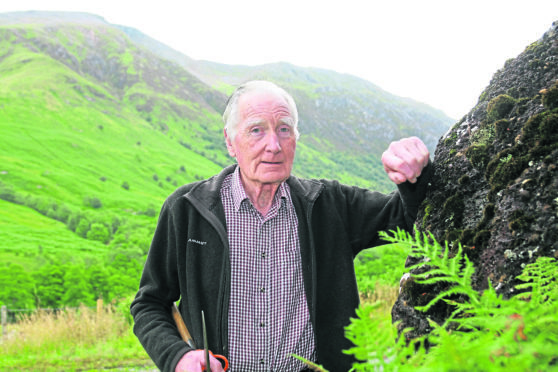At the tender age of 15, and in an era without radios and other basics we take for granted now, he became a rescuer in a patch that includes Britain’s highest peak.
But now, in the 50th anniversary year of Lochaber Mountain Rescue Team, Jimmy Ness says he believes that today’s team members “go beyond” what he did and risk their lives in “more and more” dangerous rescues.
Mr Ness, who was just a teenager in 1944 and is now in his 90th year, recounted the very earliest days with Dr Ronald Duff, who led the local mountaineering club and started a rescue service.
He even pioneered equipment to get casualties off the hills that became known as the Duff Stretcher with a wheel attached and foot supports so casualties could be lowered down cliff faces.
Mr Ness said: “It was a totally different game in those days. The gear and the equipment were not that wonderful, just clothing and ice axes – we didn’t use crampons.
“You had to go out on the Ben without radios only to find out the missing person had walked in the door five minutes after you left.”
Now despite advances in technology and equipment, the advent of both air support and mobile phones if anything the dangers have increased.
Not inexperienced when it comes to dangerous situations on the north face of Ben Nevis Mr Ness was full of praise for his successors.
He said: “Team members are now expected to take their lives in their hands and go beyond what we were capable of. Some of the rescues are becoming more and more dangerous.”
The current team leader of Lochaber MRT is John Stevenson after starting in 1981, he believes technology has both helped and hindered.
He said: “We try to minimise risk and we have top climbers who can get to places you couldn’t get to before, there is not a lot we can’t do.”
Asked about the biggest change he has seen in his time Mr Stevenson said: “The mobile phone tops the list.
“We moved to the golden hour – being able to get a casualty down and off the mountain within an hour that gives them the best chance of survival.
“But it is too handy, they phone up for the slightest thing. One man on mid summers day got drenched at the top and he called us and you think “for goodness sake, it is Lochaber, what did you expect?”










